A MONTH ago our builder Darren sent me this video with the question ‘What’s this thing?’ He added: ‘Found it in the shed on the floor, thought it was a twig till it started moving.’
A MONTH ago our builder Darren sent me this video with the question ‘What’s this thing?’ He added: ‘Found it in the shed on the floor, thought it was a twig till it started moving.’
I was pretty sure it was a caterpillar of the type known as ‘loopers’, which have legs only at the front and back ends and move by walking forward with the front legs then catching up with the back ones, forming a loop.
Here is an example:
I suggested he keep the caterpillar in a jar with some leaves (obviously he didn’t know what it was feeding on since it was on the floor) and send a picture to the Natural History Museum, which has an identification service.
Two days later the NHM’s Florin replied: ‘The specimen in your video is the larva of a geometrid moth (loopers). I’m sorry, I can’t tell what species without seeing an adult.’
He attached this list of geometrid moths in Britain, which number more than 300.
There are 23,000 recorded species around the world. (These numbers always make me feel I have been walking round with my eyes closed. I had never even heard of geometrid moths let alone seen one.)
The caterpillar duly turned into a chrysalis and a few days ago I got this picture from Darren:
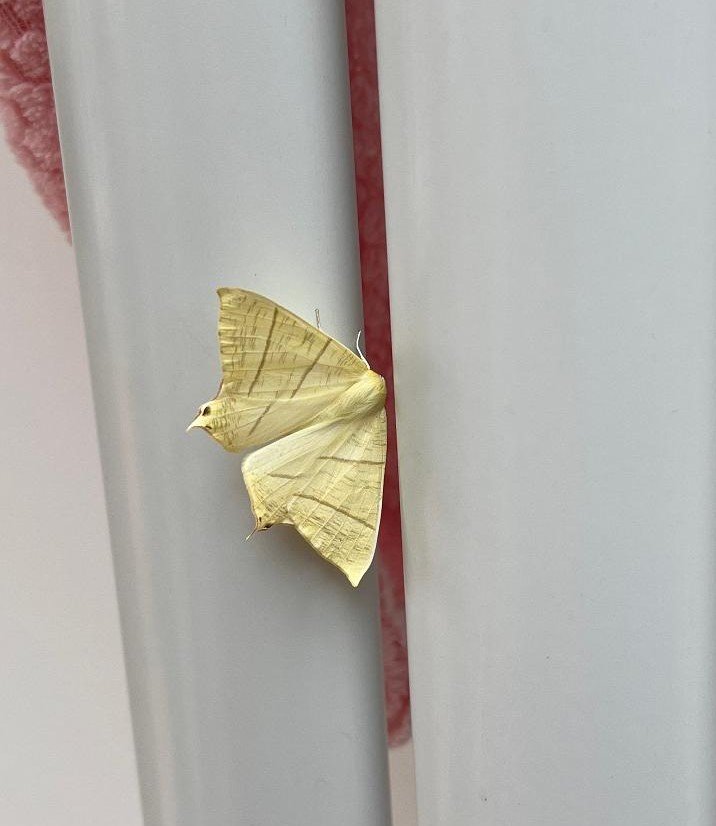
The moth had emerged and was on the radiator in his kitchen.
Now to identify it from the 300 or more pictures of possibles. Darren came round and we scrolled through the UK Moths list sent by the NHM. We were on page 11 of 14 when we found it: the swallow-tailed moth (Ourapteryx sambucaria).
The description says:
‘A spectacular species and one of our largest Geometrids, this is however reasonably common in Britain, except for northern Scotland where it is local or absent.
‘Being strictly nocturnal and having quite a short emergence period in July, it is not often encountered by the non-enthusiast.
‘The larvae feed on a number of trees and shrubs, but prefer ivy (Hedera helix).’
Obviously this specimen had not read the book as it emerged in June, not July, but maybe being in a warm kitchen speeded up the process.
Here is a picture of some caterpillars of the species – and they really do look like twigs.
I strongly recommend looking through the list – there are some really beautiful and spectacular species. They have wonderful names to match such as Scorched Carpet, Fortified Carpet, Strange Wave, Least Wave, Dark Spinach, The Traveller and Bleached Pug.
To me, metamorphosis is a miracle. I find it hard to imagine how it developed through evolution. Here is a video with a rather silly narration, but it does explain the mysterious process by which a caterpillar in effect dissolves and rebuilds itself into an adult.
If you have a query about wildlife or geology, this is the NHM site to visit.
***
At the end of November last year I was travelling home by train from London when I saw this wonderful lenticular cloud.

Here it is enlarged a bit.

It was around Rugby and you can see the M1 at the bottom of the pictures, also I assume the Grand Union Canal. I was quite pleased with my effort from a train doing 125mph.
***
Wheels of the week
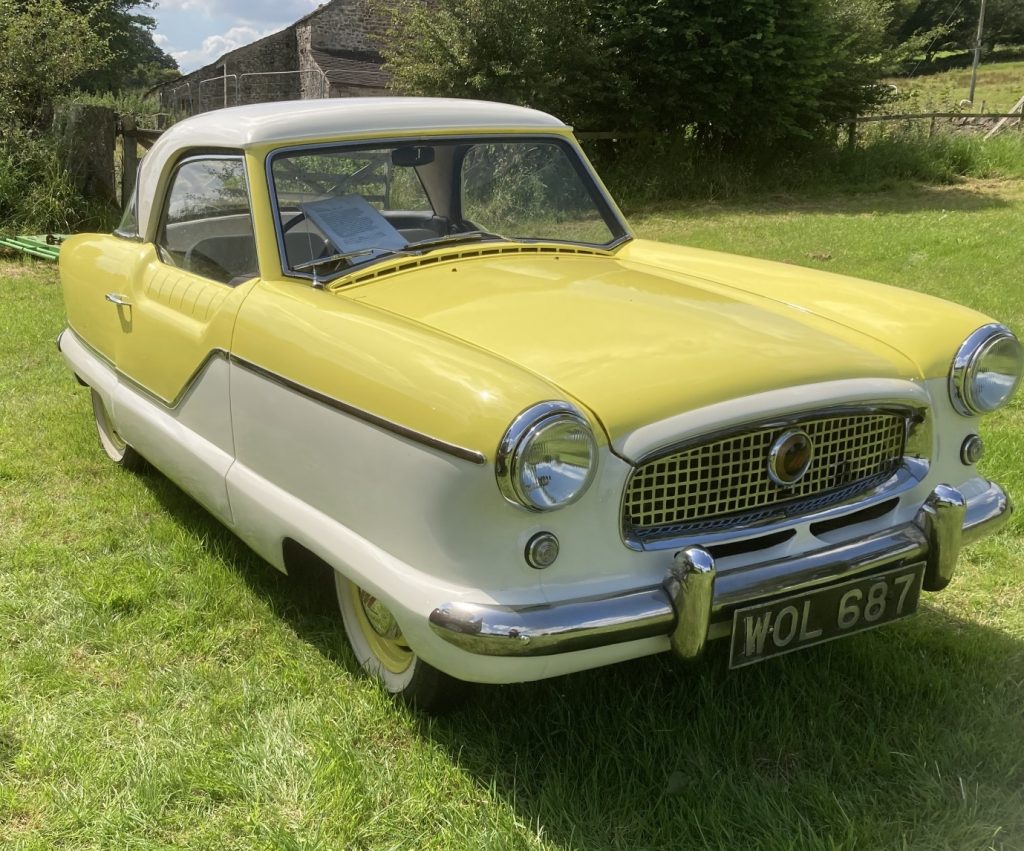
This is a 1958 Austin/Nash Metropolitan, an American car assembled in England and marketed from 1953 until 1962. It’s in the original ‘Sunburst Yellow’.
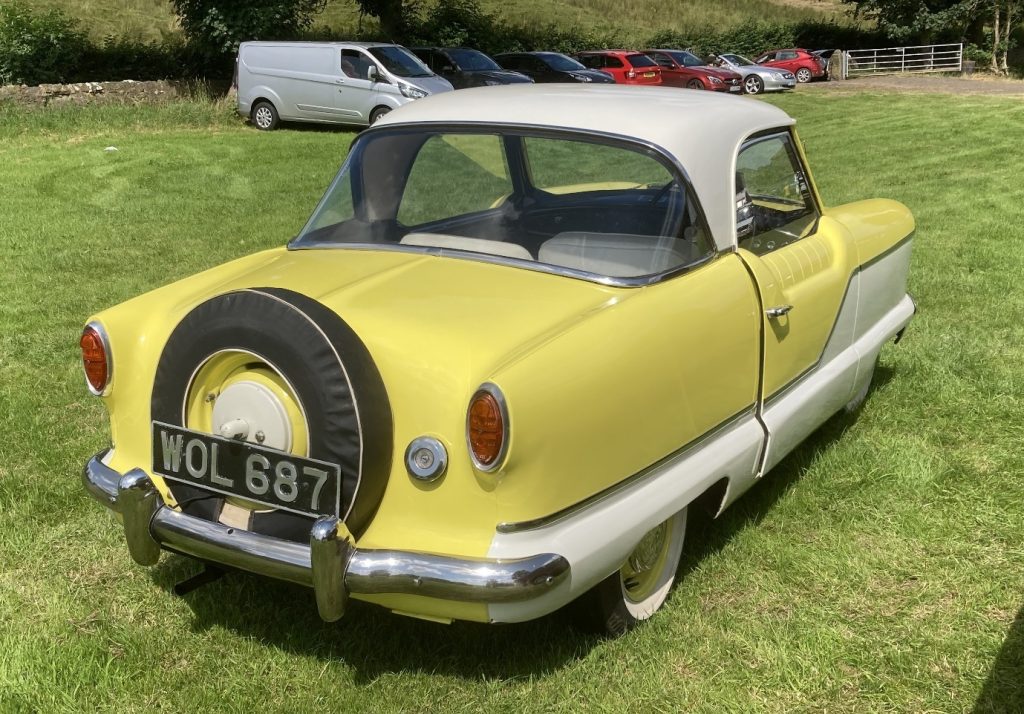

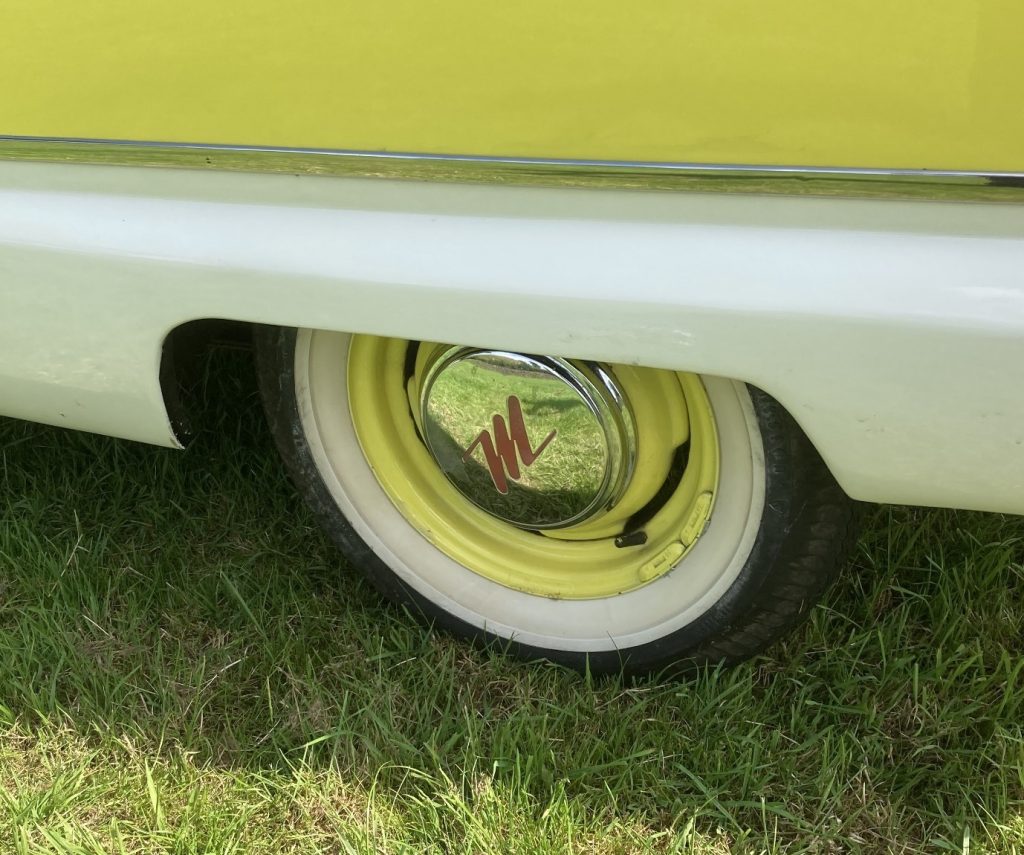
It was designed by the Nash Motor Company in Kenosha, Wisconsin, as an alternative to the huge American cars that were then predominant. The idea was that it would be the second car in a two-car family, suitable for shopping and the school run.
It was considered that it would not be economical to build the car from scratch in the US because of the tooling costs, so Nash Motors negotiated with several European manufacturers and chose two Birmingham firms, Fisher and Ludlow to produce the bodywork and Austin to assemble the car using existing mechanical components (engine, transmission, rear end, suspension, brakes, electrical). Production at Austin’s Longbridge plant started in October 1953. The finished cars, which were made in convertible and hardtop versions, were sent to the US where reviewers liked them. However although potential buyers had expressed enthusiasm, sales were disappointing primarily because the 70mph top speed was slow by US standards.
In October 1956, Austin obtained permission to sell the Metropolitans in Britain. The early brochures used a reversed photograph to show a right-hand drive car parked in the suitably English-looking town of Chipping Campden in Gloucestershire because only left-hand drive vehicles were available when the brochures were printed. You can see one of them here.
Production ended in 1961. According to the legend below which was in the car I pictured, 95,000 models were sold in the US and Canada and 5,000 in Britain. You can find a detailed history of the marque here.
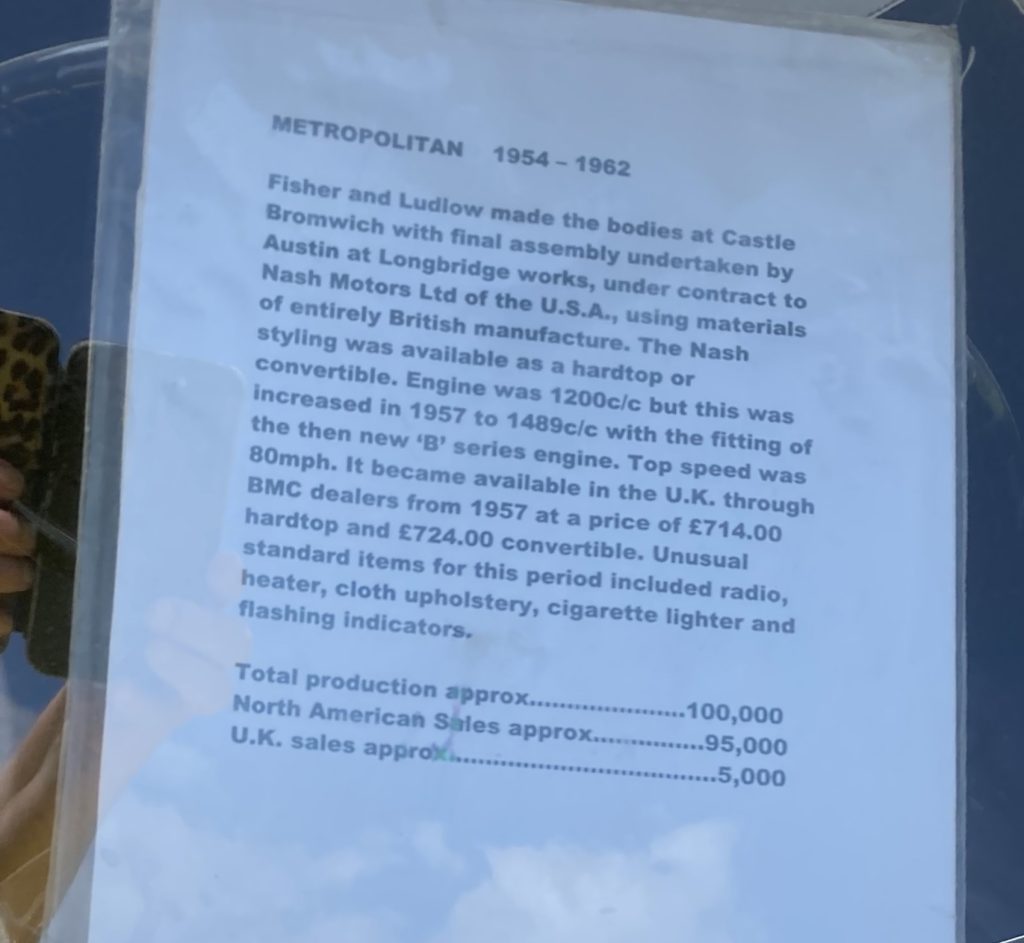
Notable owners of Metropolitans included Elvis Presley, Steve Jobs, Paul Newman and Jimmy Buffett. There is an article about them here.
Princess Margaret was given a convertible model with unique black and gold styling as a wedding present in 1960. Apparently the princess was very fond of the car, as you can read here. It was stolen by joyriders in 1961 and recovered, but I can’t find out what happened to it after that.
The website How Many Left says 52 Metropolitans were taxed or had a SORN in Britain last year. This is a great site giving the numbers of every car still in existence in the UK. You can also find details of every car on the road or with a SORN at the government vehicle inquiry website.
***
Farm animal of the week
I have more or less run out of sheep, so here is a picture of some monochrome cows in the field at the back of our house last summer.
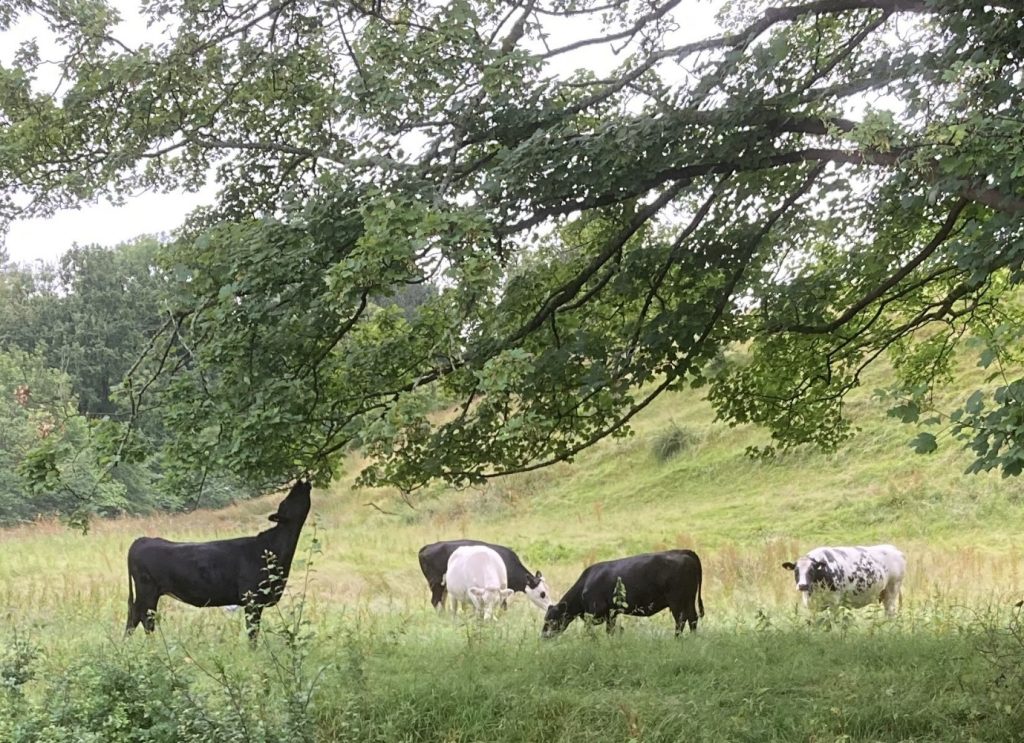
***
Finally, I have often remarked on the worrying disappearance of insects, without which there would be no other animal life on the planet, and probably not much plant life. For several years I have seen fewer and fewer. However this spring there were noticeably more than in the recent past and I hope this is a sign that people are getting the message about not using insecticides in their homes and gardens. And while I am no fan of Starmer and his mob, I am relieved to see that they have banned the use of neonicotinoid pesticides which are highly toxic to bees, after five years of the Tories refusing to do so.
It saddens me that so many people are wasting their time dressing up for Just Stop Oil and other useless ideology-driven campaigns when there is so much that could be done in practical terms to improve and protect today’s wildlife and environment.
***
I’m afraid this column does not signify a regular return of Notes from the Sticks, but I hope to provide further occasional contributions.











